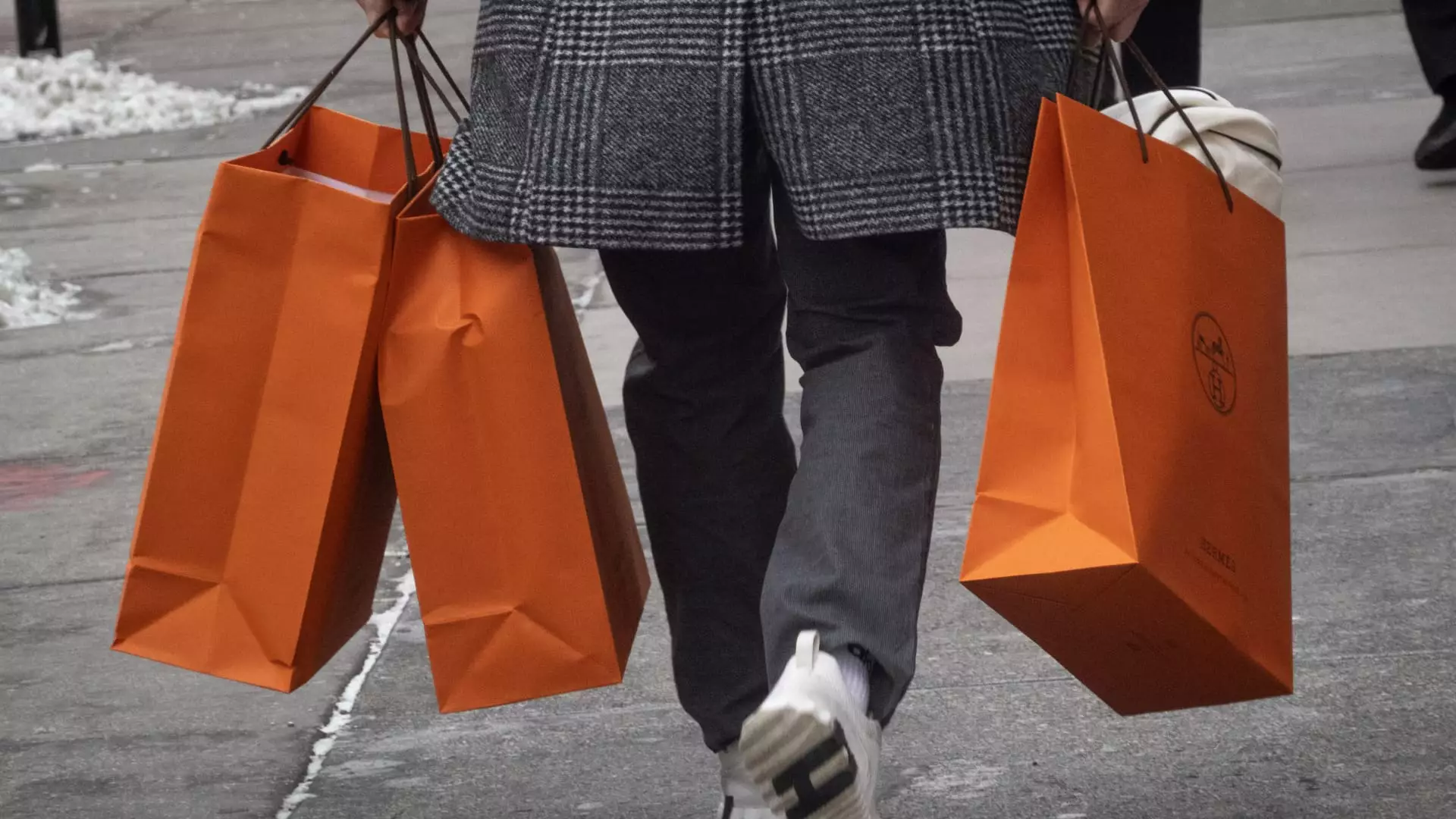The world of luxury fashion has always been entwined with the notion of opulence, exclusivity, and most importantly, the allure of European craftsmanship. As we observe unfolding events, notably in the economic sphere, European luxury brands like LVMH, Kering, Richemont, and Hermes find themselves at a precarious crossroads. While the initial consequences of U.S. tariffs on these brands may appear minimal, lurking beneath the surface is a tumultuous reality that threatens to sabotage a long-awaited recovery. With a delicate balance teetering on recession, the stakes are astronomically high, not just for fashion houses but for the global economy.
The Tariff Tidal Wave
The recent U.S. imposition of tariffs highlights a contentious and rapidly evolving geopolitical landscape. President Trump’s announcement was met with a temporary “pause” that allowed for universal tariffs set at 10%, but such short-term measures do little to quell the storm brewing on the horizon. Analysts are warning of a growing possibility of a global recession, with estimates now soaring to a staggering 60% probability. This environment of uncertainty does not just threaten the luxury sector; it evokes broader fears of market instability and diminished consumer confidence.
For brands that thrive on the prestigious “Made in Europe” label, the impact of import cost increases could prompt a seismic shift. Instead of capitulating to relocate manufacturing closer to their U.S. consumer base — an unthinkable dilution of their brand fabric — many European luxury houses are instead planning to offload costs onto consumers. The crux of the issue lies in whether those accustomed to high-priced luxury items can still stomach hikes in an economically weak landscape.
The Ripple Effect of Economic Uncertainty
Despite generating only 15% to 30% of their revenues from American consumers, European luxury brands have increasingly relied on the U.S. market amid dwindling sales in China. Yet, this reliance now hangs by a thread. If Chancellor of the Exchequer Jamie Dimon’s sentiments are anything to go by, the market turmoil could escalate to a point where luxury demand flounders. The potential for a broader global downturn casts a shadow over the optimism initially sparked by hopeful quarterly results from high-end fashion.
Luxury isn’t merely a product; it’s an experience rooted in economic confidence. Adam Cochrane from Deutsche Bank suggests that what once seemed like an optimistic recovery may be an outlier rather than a trend. If the chips continue to fall in the wrong direction, brands might find themselves grappling with uncharacteristic declines in consumer interest.
China: A Delicate Dependency
In an unsettling twist, the reluctance of affluent consumers in the U.S. to absorb new costs caused by these tariffs can only worsen as a synergistic effect kicks in—particularly in Asia, where U.S. tariffs could trigger 125% import taxes. This scenario does not merely threaten sales; it endangers the nuanced dependency luxury brands have on China, which is pivotal given the economic weight of the Chinese consumer. As demand wanes, the question arises: can European fashion houses pivot yet again to maintain their dwindling foothold in a once-booming Asian market, or will the likes of Gucci and Prada cool off in the heat of consumer greed?
Future Prospects: Hope or Despair?
In a climate where even the most celebrated luxury brands are being scrutinized, perspectives diverge. While the seasoned analysts at Citi have flagged these tariffs as a “significant threat to the future of U.S. luxury demand,” others remain cautiously optimistic. When examining current market players, brands like Hermes seem positioned to ride out the storm with their solid foundations, while others, such as Richemont and Moncler, may find themselves caught in the undertow.
The complexity of the luxury market extends far beyond mere fiscal metrics; elucidating the emotional and psychological connections consumers have with their coveted brands adds another layer of vulnerability. In times where consumer sentiment is swayed by immense uncertainty, brands must pivot not only in strategy but in their very ethos to weather impending economic squalls.
The Call for Reinvention
As this chapter unfolds in the storied history of luxury fashion, one cannot help but ponder whether it is time for a reinvigoration of brand narrative. In a world where the global economic forecast appears precariously dim, luxury brands might benefit from reflecting not only on market strategies but also on brand messaging that transcends ostentation. It is at these crossroads that the essence of true luxury might redefine itself—embarking on a path where genuine consumer relations and socio-economic mindfulness become key players in ensuring longevity in a volatile world.
The stakes are high in this intricate dance of commerce, politics, and consumer desire. European luxury houses may find their most significant trials lie not in financial losses but in navigating the existential challenges that define modern consumption.

